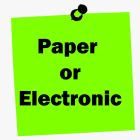Given recent trends toward improving business processes in a bid to increase efficiencies and drive down costs, one wonders why more enterprises have not fully automated their AP processes. This is especially true in light of the challenges brought on by the pandemic, which made paper-based processes unworkable with the work-from-home mandates that most employers enacted. Ardent Partners’ research has consistently shown that automated invoicing processes can cost between 40% and 90% less when compared to manual, paper-based processing methods. The discussion below highlights some of the most-widely used the ePayables solutions currently in use and planned for usage in the next 12 to 24 months that have helped, or will help, enterprises achieve the automation required to improve process efficiency and cut costs. A discussion of four of the top key solutions follows.
ePayables Current and Planned Usage
Automated data capture and extraction technologyis one of the first solutions typically deployed by an AP department because it enables the transfer of key information from paper-based invoices into digital data, which is then fed into a larger solution suite (i.e., P2P platform, full AP automation suite, or ERP). While this technology delivers value in the form of increased efficiencies, it is simply a starting point in a larger AP transformation.
eInvoicing solutions remove paper from the AP process by enabling suppliers to create and submit invoices electronically. The system maintains that format through the validation, matching, and approval processes. eInvoicing drives process efficiencies by eliminating data capture and manual data entry. eInvoicing solutions offer tremendous simplification on the process side, as well as cost savings in terms of price per invoice processed. This is most directly seen with solutions enabling “straight-through processing,” which occurs when a submitted invoice is processed and approved without any human intervention. To gain the best returns on eInvoicing, supplier participation is needed.
ePayments solutions have seen a sharp rise in adoption over the past few years due, in part, to a more holistic (and expanded) focus on the role of AP that now includes both invoice and payment processing. The increase in availability of new ePayment solutions has also triggered greater interest in the area. While many AP departments remain focused on the front end of the process, more groups are realizing that ePayment solutions (which can tailor payments specific to certain suppliers utilizing a variety of electronic means, including ACH, commercial/ payment cards, virtual cards, wire transfer, etc.) are vital to completing the full cycle of P2P.
A majority of organizations will automate all facets of the procure- to-pay process by 2024. Within the next two years, nearly 68% of businesses state that they will have automated the complete P2P cycle, enabling a robust union between procurement and finance that generates power, value, and efficiency. This underlines the importance for procurement and finance leaders to view procure to pay as a single process that can optimize efficiencies and intelligence for the greater organization.



